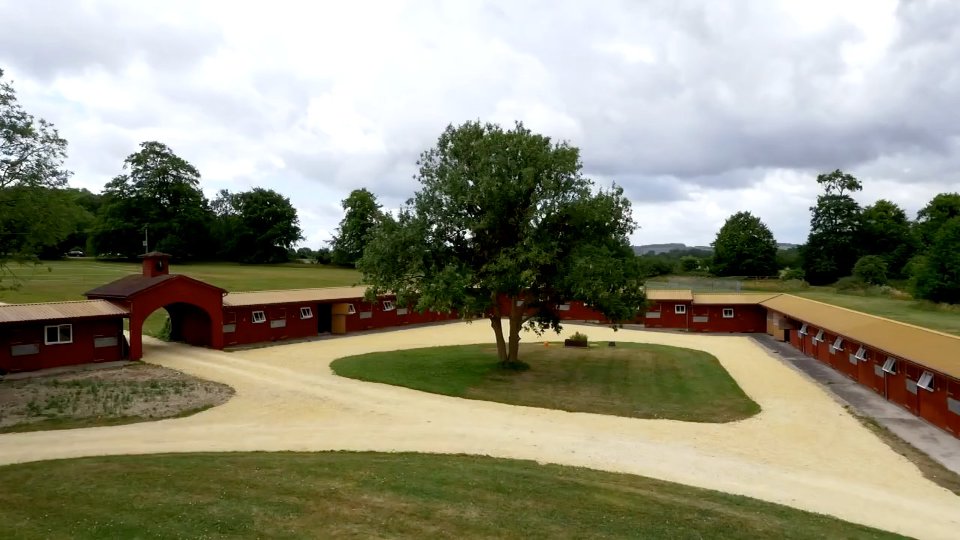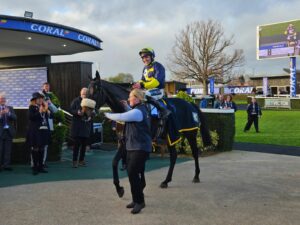Danebury Racing Stables, together with the adjoining Stockbridge Racecourse, is one of the most historic and picturesque racing yards in England. It was once regarded as one of the great headquarters of British racing, rivalled only by Newmarket. In the 19th century, the area drew the elite of the turf and high society alike, becoming synonymous with sporting excellence and prestige. Nestled in the heart of the Hampshire countryside near the market town of Stockbridge, the historic Danebury yard sits beneath the ancient Danebury Hill, a site rich in both prehistoric and equestrian heritage.
Origins and Location
The nearby Stockbridge Racecourse was, by the mid-19th century, one of England’s foremost provincial racing venues. The proximity of Danebury to this prestigious course made it the perfect base for racehorse training. The stables quickly gained a reputation for excellence that would endure for generations.
Establishment as a Premier Training Yard
In the early 1830s, the great trainer John Barham Day (1793–1860) established his training yard at Danebury. Under his guidance, the yard became a powerhouse of British racing. His son, John Day (1819–1883), later took over and trained numerous Classic winners from the same yard, including Derby and Guineas champions. This was truly the golden era of Danebury.
Golden Years & Notable Figures
During the 19th century, Danebury became synonymous with victory. The Days sent out a string of Classic winners, cementing the stables’ reputation as one of the most successful in the country. Later, the renowned jockey and trainer Tom Cannon Sr. (Great Grandfather of the legendary Lester Piggott) also trained from Danebury, continuing its legacy of excellence.
In the mid-19th century, the twin sites of Danebury Racing Stables and Stockbridge Racecourse were so dominant that they were widely regarded as a major “headquarters” of British racing—rivalled only by the very best like Newmarket. According to a feature in the Racing Post, the area once hosted yards and training operations which “rivalled the best in Newmarket … both for numbers and sheer quality”.
Decline of the Racecourse, But the Yard Lives On
The adjoining Stockbridge Racecourse eventually closed in 1898 after its landowners refused to renew the lease due to moral objections to gambling. However, the Danebury training yard survived and continued to thrive as a private training establishment, maintaining the same gallops and grounds that had produced so many champions.
Modern Era & Present-Day Usage
In the 20th and 21st centuries, Danebury Stables has remained active, evolving with the sport. Modern facilities now complement its traditional character, including all-weather tracks and grass gallops. The site continues to be associated with high-quality training and professional management, preserving its historic legacy while embracing the future of racehorse development.
Why Danebury Matters in Racing History
Danebury Stables holds a unique place in British racing history because of its association with multiple generations of legendary trainers and horses. Its geographical advantages, enduring infrastructure, and rich cultural ties to the Stockbridge area make it a cornerstone of the UK’s equestrian heritage.
- Legacy of Champions: Home to Classic winners under John and Tom Day.
- Prime Location: Direct access to one of the era’s most important racecourses.
- Enduring Infrastructure: Historic gallops still in use today.
- Cultural Significance: Central to the sporting story of Stockbridge and the Test Valley.
Key Milestones in Danebury’s History
| Date | Event |
|---|---|
| Early 1830s | John Barham Day establishes training base at Danebury. |
| Mid-19th Century | John Day trains multiple Classic winners from the yard. |
| Late 1800s | Tom Cannon Sr. continues Danebury’s winning tradition. |
| 1898 | Stockbridge Racecourse closes, but Danebury Stables remains active. |
| 1976 | Danebury Racing Stables Limited is officially incorporated. |
Visiting Danebury Today
Today, the Danebury site can be appreciated for its heritage and beauty. Public footpaths around Danebury Hill and Stockbridge Down offer views of the area’s historic gallops, while modern training continues nearby. The combination of tradition, landscape, and living history makes Danebury a truly special part of British racing’s story.
Conclusion
The story of Danebury Racing Stables is one of endurance, prestige, and passion for the sport of kings. From John Barham Day’s Classic winners to the modern training operations that keep the site alive, Danebury stands as a proud link between the glory days of Victorian racing and the thriving equestrian community of today.




